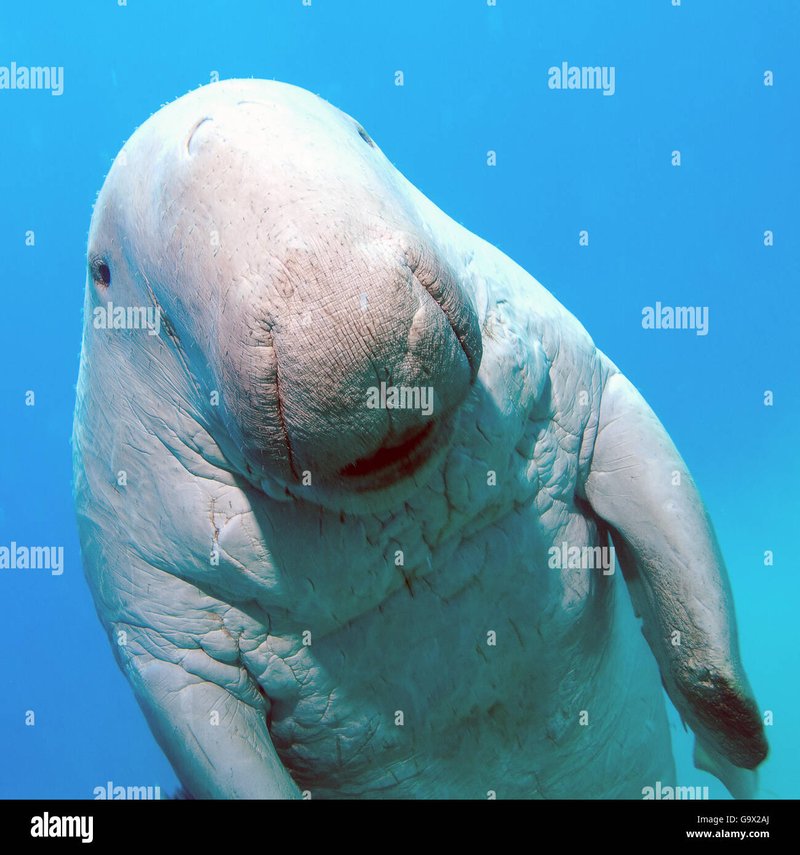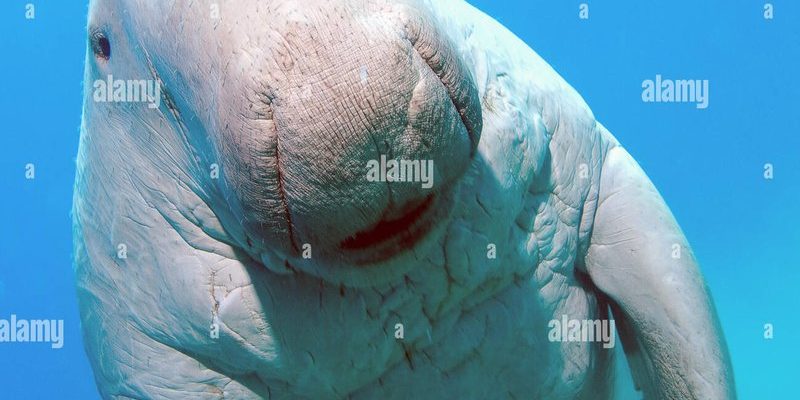
Dugongs, also known as “sea cows,” are herbivorous mammals that graze on underwater vegetation. They roam warm coastal waters, primarily in the Indian and western Pacific Oceans. Despite their peaceful nature and ecological importance, dugongs are often misunderstood. In this article, we’ll bust some of the most common myths surrounding dugongs, helping you better appreciate these remarkable marine mammals.
Dugongs Are Just Like Manatees
Many people make the mistake of thinking that dugongs and manatees are identical. While they are indeed related, they’re actually quite different. You might compare them to distant cousins; they share a family tree but have their unique traits.
Dugongs have a distinct, elongated snout shaped like a shovel, making them skilled at foraging for seagrasses on the ocean floor. In contrast, manatees have a rounder, more paddle-shaped snout. Additionally, dugongs have a tail that resembles a fluke, similar to that of a whale, while manatees sport a more rounded tail. These differences illustrate how each species has adapted to their specific environments and feeding behaviors.
Finally, while both animals spend a lot of their time grazing, dugongs are primarily found in marine habitats, whereas manatees often inhabit rivers and freshwater areas. So, while these two marine mammals may share common origins, they have diverged in their physical characteristics and habitats.
Dugongs Are Lazy Animals
You might have heard that dugongs are slow and lazy, but that’s not quite true. Sure, they can be seen peacefully grazing on seagrasses for hours, drifting along the ocean currents, but that’s just part of their natural behavior.
Dugongs can actually be quite active. They are incredibly graceful swimmers when they need to be, often reaching speeds of up to 15 miles per hour in short bursts. They may appear lazy as they float about, but this is their way of conserving energy while they forage. Just like humans enjoy lounging on the couch after a long day, dugongs have their own way of relaxing.
Furthermore, dugongs are diligent eaters. They can consume large quantities of seagrass—up to 88 pounds a day! Their grazing helps maintain the health of seagrass beds, which are crucial for the overall health of marine ecosystems. So, it’s not laziness; it’s a lifestyle that contributes to their role in the environment.
Dugongs Are Endangered Because of Overfishing
While overfishing is a significant concern for many marine species, it’s not the main reason dugongs are endangered. You might be surprised to learn that habitat loss is actually the biggest threat to these gentle giants.
Dugongs rely on seagrass habitats, which are disappearing due to coastal development, pollution, and climate change. When coastal areas are developed, or when runoff from land enters the waterways, it can smother seagrass beds, disrupting the food source for dugongs. This is a major factor that has led to their declining population numbers.
Dugongs also face threats from boat strikes and entanglement in fishing gear. While hunting for meat has historically been a problem in some regions, conservation efforts have helped reduce direct hunting pressure on dugong populations. So, the next time you hear about dugongs being endangered, remember that it’s more about habitat loss and less about overfishing.
Dugongs Can Live Anywhere in the Ocean
It’s a common myth that dugongs can thrive in any ocean environment. In reality, these mammals have specific habitat needs that restrict their living areas. Dugongs prefer shallow coastal waters where seagrass beds flourish because that’s their primary food source.
They’re often found in areas with warm water temperatures—preferably between 20 to 30 degrees Celsius. If the water gets too cold or too hot, dugongs struggle to survive. Plus, they require clear waters, as murky conditions can make it difficult for them to find food.
Dugongs are social animals that typically inhabit areas rich in seagrass and close to shore. This limited range means they face significant challenges when their habitats are threatened or altered. Protecting and restoring their specific environments is crucial for their survival.
Dugongs Are Aggressive Animals
Imagine a sea creature that looks like a cow but possesses a fierce temperament. That’s not the dugong! Contrary to some beliefs, these peaceful mammals are gentle giants. They pose no threat to humans and typically flee from encounters rather than confront them.
Dugongs spend their days grazing in the ocean and lounging in the sun. If they feel threatened, their instinct is to swim away. They can be curious creatures, sometimes approaching boats or divers, but they’re never aggressive. This calm demeanor is one of the reasons they’ve earned the nickname “sea cows.”
The gentle nature of dugongs serves as a reminder of the importance of treating all wildlife with respect. They’re integral to their ecosystems, and promoting the understanding of their behavior can help foster conservation efforts.
Dugongs are truly remarkable creatures, contributing significantly to the health of our oceans. Unfortunately, myths and misconceptions can overshadow their importance and the threats they face. By debunking these misunderstandings, we can foster better awareness and appreciation for dugongs.
Whether you’re diving into the ocean or simply enjoying a day at the beach, remember that nurturing their habitats plays a crucial role in preserving these gentle giants for generations to come. The next time someone brings up dugongs, you can impress them with your newfound knowledge!

